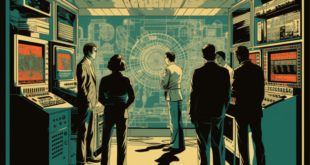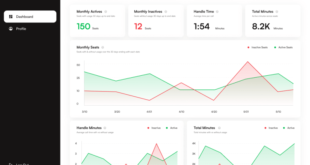
Self-driving car startup Aurora today announced that it’s acquiring Uber’s Advanced Technologies Group, the ride-hailing company’s driverless vehicle division, for an undisclosed amount. (A source tells CNBC the deal is valued at around $ 4 billion.) As a part of the sale, Uber — whose CEO, Dara Khosrowshahi, will join Aurora’s board of directors — says it will invest $ 400 million in Aurora as the latter shores up partnerships for the commercialization of its autonomous vehicle systems.
The pandemic and its effects, including testing delays, has resulted in consolidation, tabled or canceled launches, and shakeups across the autonomous transportation industry. Ford pushed the unveiling of its self-driving service from 2021 to 2022; Waymo CEO John Krafcik told the New York Times the pandemic delayed work by at least two months; and Amazon acquired driverless car startup Zoox for $ 1.3 billion. According to Boston Consulting Group managing director Brian Collie, broad commercialization of AVs won’t happen before 2025 or 2026 — at least three years later than originally anticipated.
ATG was founded in 2015 with a team of roboticists from Carnegie Mellon University. At the time, Uber, which has a strategic partnership with Carnegie Mellon, was accused of gutting the university’s National Robotics Engineering Center; the ride-hailing company hired away about a third of the center’s staff.
Uber invested heavily in ATG and last year secured a $ 1 billion tranche from Softbank, Toyota, and Denso valuing the division at $ 7.25 billion, driven by a desire to minimize the single largest expense on its balance sheet: drivers. (Frost & Sullivan peg ride-hailing contractors at 80% of the total per mile cost.) The plan was to build a cost-effective, efficient, driverless robo-taxi service that would complement Uber’s driver fleet. Optimistically, Uber projected that it would have 13,000 autonomous vehicles operating by 2019 and expand this to 75,000 in 13 cities by 2022.
In 2016, Uber launched its first self-driving service for select customers in Pittsburgh using a fleet of retrofitted Ford Fusions. And in 2017, the company expanded the program to Phoenix, Arizona, where its cars picked up passengers with Uber engineers in the front seats of each vehicle. That same year, Uber opened an ATG branch and engineering hub in Toronto, which it pledged to back with more than $ 150 million. And the company announced a non-binding plan to buy up to 24,000 Volvo XC90 SUV vehicles designed for autonomous technology, including specialized types of steering, braking mechanisms, and sensors.
By early 2019, Uber was reportedly setting aside as much as $ 200 million per quarter to develop its driverless technology. In November, Uber reported that ATG and “other technologies” had a net loss of $ 303 million in the nine months that ended September 30, 2020. And in its S-1 document, Uber said it incurred $ 457 million of R&D expenses for its ATG and “other Technology Programs” initiatives.
But ATG was dogged by setbacks from which it struggled to fully recover. In late 2016, owing to Uber’s failure to adhere to the proper permit process, the California Department of Motor Vehicles (DMV) revoked the registration the company was using to test self-driving Volvo XC90 SUVs in San Francisco, forcing the program to cease operations in California. And after spending over $ 925 million to develop autonomous trucks (including the $ 625 million it paid to acquire self-driving startup Otto in 2016), Uber canceled its driverless truck program following a legal settlement that gave Waymo $ 244 million in Uber equity and prohibited Uber from infringing on Waymo’s intellectual property.
In March 2018, one of Uber’s cars struck and killed a pedestrian while driving in autonomous mode, prompting a firestorm of criticism from legislators, regulators, and the public. Following the accident in Tempe, Arizona, it restarted tests in Pittsburgh and San Francisco with a small fleet that now numbers dozens of cars. (Uber received a California DMV license to test driverless cars on public roads in March.) The National Transportation Safety Board later determined that Uber had disabled the automatic emergency braking system in the Volvo XC90 involved in the crash.
ATG rivals like Waymo have suffered fewer roadblocks, but the sell-off to Aurora also signals recognition within Uber that the arrival of self-driving cars isn’t as imminent as it once seemed. A recent report suggests fully driverless systems will take at least a decade to deploy over large areas, resulting in variations in availability across the country. And a study coauthored by MIT researchers found that autonomous vehicles would be expensive to operate, costing between $ 1.58 and $ 6.01 per mile in San Francisco with a single occupant. Uber currently pays drivers up to $ 2 per mile in some of the more expensive cities, like New York.
Uber hasn’t given up on autonomous vehicles altogether — its partnership with Aurora, which will see Aurora’s technology leverage Uber’s ride-hailing network, is evidence of this. But in light of cratering ride-sharing income — a symptom of the pandemic — Uber’s focus is increasingly shifting away from long-term, capital-intensive bets to businesses within its wheelhouse. According to Axios, the ride-hailing company has agreed to sell Uber Elevate, its flying taxi business, to secretive startup Joby Aviation. In July, Uber acquired on-demand delivery company Postmates in an all-stock deal valued at $ 2.65 billion. And Uber has dumped shared micromobility unit Jump and sold a stake in its growing (but still unprofitable) logistics arm, Uber Freight
Aurora, which was cofounded by Chris Urmson, one of the original leaders of the Google self-driving car project that became Waymo, has its sights set on freight delivery for now. In January, Aurora said that after a year of focusing on capabilities including merging, nudging, and unprotected left-hand turns, its autonomous system — the Aurora Driver, which has been integrated into six different types of vehicles to date, including sedans, SUVs, minivans, commercial vans, and freight trucks — can perform each seamlessly, “even in dense urban environments.” More recently, Aurora announced it will begin testing driverless vehicles, including semi trucks, in parts of Texas.
In a blog post published this afternoon, Urmson noted that ATG has created a log-data platform that allows engineers to quickly find the right data for performing experiments, training models, and more. In addition, he said, the division developed extensible, web-based visualization tools that “gives employees across the organization insight into the performance of each part of the system and how their code translates to the road.” Urmson added Aurora stands to benefit from ATG’s tooling, workflows, and automation, which could accelerate efforts like label production, as well as the Uber spinoff’s cloud infrastructure and hardware kit elements like liquid cooling for the computers in its self-driving prototypes.
Last year, Aurora raised investments from Amazon and others totaling $ 600 million at a valuation of over $ 2 billion, a portion of which it spent to acquire lidar sensor startup Blackmore. (Lidar, a fixture on many autonomous vehicles designs, measures the distance to target objects by illuminating them with laser light and measuring the reflected pulses.) Now valued at $ 10 billion, Pittsburgh-based Aurora has committed to hiring more workers, with a specific focus on mid- to senior-level engineers in software and infrastructure, robotics, hardware, cloud, and firmware. The AGT purchase could grow the size of its workforce from around 600 to nearly 1,200, accounting for ATG’s roughly 1,200 employees.



